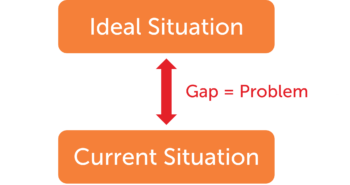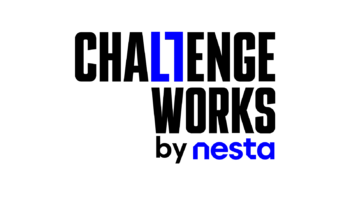Approaches to problem-solving in cities
11 August 2023
- Julie-Ann Burandt
The Problem with Problems
We all have problems. Big ones, complex ones, little irritating ones. As individuals, as teams, as organisations, as societies and as nations we have problems.
We’re going to focus today on cities in particular. Cities are incredibly complex systems and the organisations and individuals with the responsibility to keep cities moving can have incredibly difficult jobs. Diverse, and often ever-changing, residents and visitors; finite resources; and high expectations for services such as public mobility.
It’s not bad to have problems.
In fact, according to Taiichi Ohno, the father of the Toyota Production System, “no one has more trouble than the person to claims to have no trouble,”or put simply, having no problems is actually the biggest problem of all.
Having problems gives us opportunities for growth and progress. The problem with problems comes when we don’t actually understand the problem we are trying to solve. It happens all too often, and it makes resolving it that much harder.
Toyota have a framework to help better understand and break down problems. Understanding a problem starts with asking the right question;
Let’s use an example to better explain.
A recent city resident survey has shown that bicycle theft is on the rise. A local community organisation has proposed that they can solve this problem. They want to host a workshop with the city administration and employees from their team to solve the following problem:
How can we use online marketplace monitoring to make it more difficult to sell stolen bicycles in our city?
There’s a problem with their problem. The problem is actually a solution (online marketplace monitoring) so it’s not the right problem to solve.
What would be the right problem to solve? Using the Toyota Problem Solving Framework, we can pinpoint it.
A problem is the gap between an ideal situation (or a standard) and the current situation.

The team need to look at the current situation in the city. What is the current bicycle theft rate in the city? Using law enforcement figures alongside estimated bicycle theft reporting estimates, it’s calculated that a bicycle theft happens in the city approximately once per hour (24 per day), which is 25% higher than the average of 3 other neighbouring cities.
Now the current situation is understood, they can set a goal for the ideal situation for the city. Given some budget and resource constraints, the team agree with a citizen panel that the ‘ideal’ would be to reduce the thefts by at least 30%, to approximately 16 a day.
With the current and ‘ideal’ situations outlined, the team have now identified this 30% gap in the theft rate versus the current situation. Now they can present the correct problem:
How can we reduce bicycle theft by 30% in our city?
With the correct problem identified, the team can now follow the next steps to analyze the root cause of the problem and then develop the right countermeasures or solutions to best reduce bicycle theft.
Once they have analyzed the root cause of the problem, perhaps online marketplace monitoring will be the correct solution, but maybe not. Maybe they will find any number of other approaches that might suit the city better (bike registration, secure bicycle stores, CCTV etc.). The right process will help lead them to the best countermeasure.
It can be tempting to jump straight to ‘solution sets’ in order to solve the problem quickly. If we don’t take time to properly analyze the problem, we might not arrive at the best solutions.
In the Sustainable Cities Challenge, we’re currently looking for cities to enter with a problem or challenge they’re looking to address.
How can cities apply this framework when entering the Sustainable Cities Challenge?
When you fill out the entry form and answer the questions regarding the specific problem or challenge that you’d like to address, you can apply the simple approach outlined above – share data about the current situation in your city related to the theme that you select. Then highlight the evidence you have and the goals you have to describe the ‘ideal’ situation in your city. This will help surface the existing gap. Then, through the Challenge together can identify innovative solutions that could help to close the gap between the current and ideal situation.
In the Challenge, we are looking for a problem that is not currently being addressed by existing processes, and you may not know where the best solution could come from. It’s in situations like this where open innovation challenges can be most impactful, identifying and supporting innovative solutions that will can have a tangible impact.
Still want to learn more?
We will be providing our 10 shortlisted cities for the Sustainable Cities Challenge a deeper dive into Toyota Problem Solving concepts as a part of our capacity-building City Academy in November 2023.
If you are interested in learning more and participating in the Sustainable Cities Challenge, check out the website or email us at [email protected].
Entries are open until 18th September 2023 at 4pm UTC.




